Baking a loaf of perfect banana bread is an art as well as a science, and it often needs some trial and error to get that perfect look and texture. If you have retrieved your banana bread from the oven and it is too gummy, tense, mushy, or sunken in the middle, there is not much you can do now. Unfortunately, the damage is done, and there is little you can do to fix it.
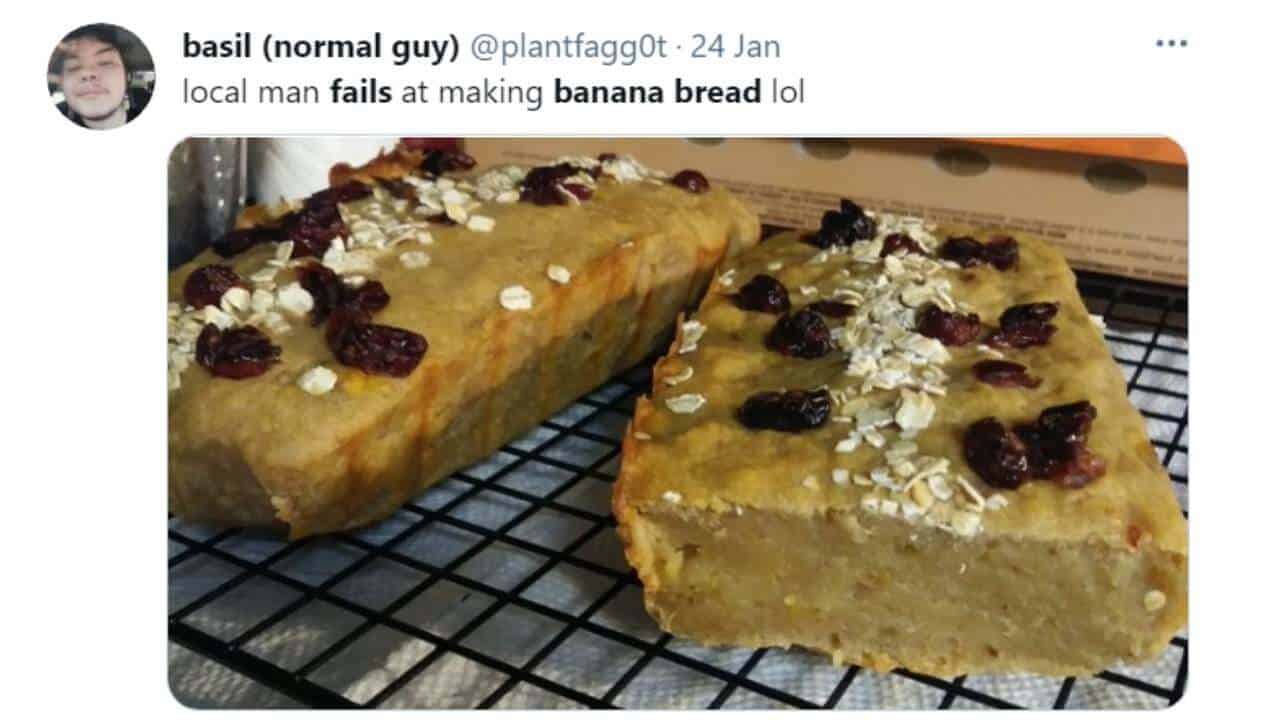
So, what went wrong? This gummy texture could manifest itself as looking undercooked, gooey, dense, or rubbery. None of these terms are how you want to describe your banana bread or any baked goods!
But luckily, most of these problems have an easy solution, and with some simple changes and adjustments, you will get a perfect bake next time.
Look through the troubleshooting tips below, go over the list of ingredients, compare your recipe to other banana bread recipes, and make adjustments when creating the new loaf.
Check out this super easy and fool-proof banana bread recipe below.
Before we get into the troubleshooting, let’s look at what some of the main characteristics of perfect banana bread are.
Characteristics Of A Perfect Banana Bread
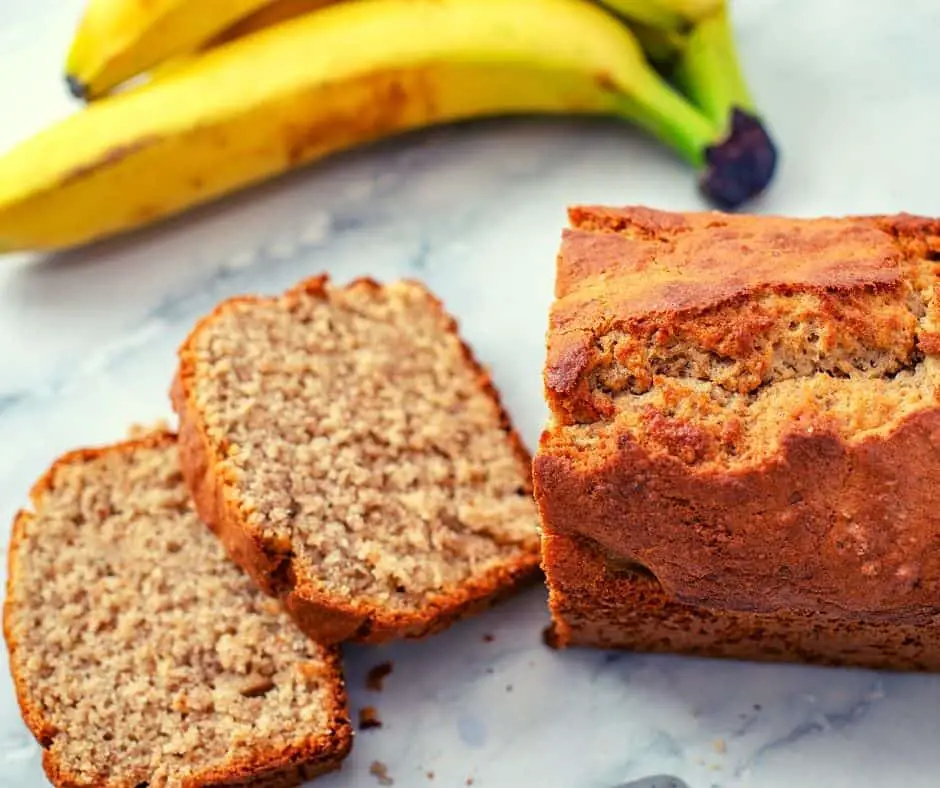
If it is your first time baking banana bread and you are not quite sure what to expect, here are some qualities that would help you determine if the bake was successful or not:
- The top of the loaf should be a toasty crust, golden brown, and the edges are slightly pulling away from the sides.
- There may also be a crack or split on top, which many bakers find quite desirable.
- The loaf should feel firm and bounce back when gently pressed.
- The texture of the banana bread should be moist, fluffy, and slightly crumbly.
- When inserting a wooden stick or knife into the center of the loaf, it should come out clean. That means the loaf is thoroughly baked.
- There should be a deliciously warm, sweet scent of bananas, walnuts, cinnamon, and vanilla rising from your oven. (Depending on your ingredients, of course).
- It should have a subtle natural banana flavor with a gentle sweetness and slightly buttery taste.
Now, if your banana bread turned out anything but that, then there are a few things we could check, troubleshoot, and change to get the perfect result next time.
Your Banana Bread Is Half-Raw And Undercooked In The Middle
Nothing is worse than when you take your loaf out of the oven and find raw and claggy batter in the middle. This one can be tricky because your bread may be turning too brown or burning on the top, but it’s still uncooked in the middle.
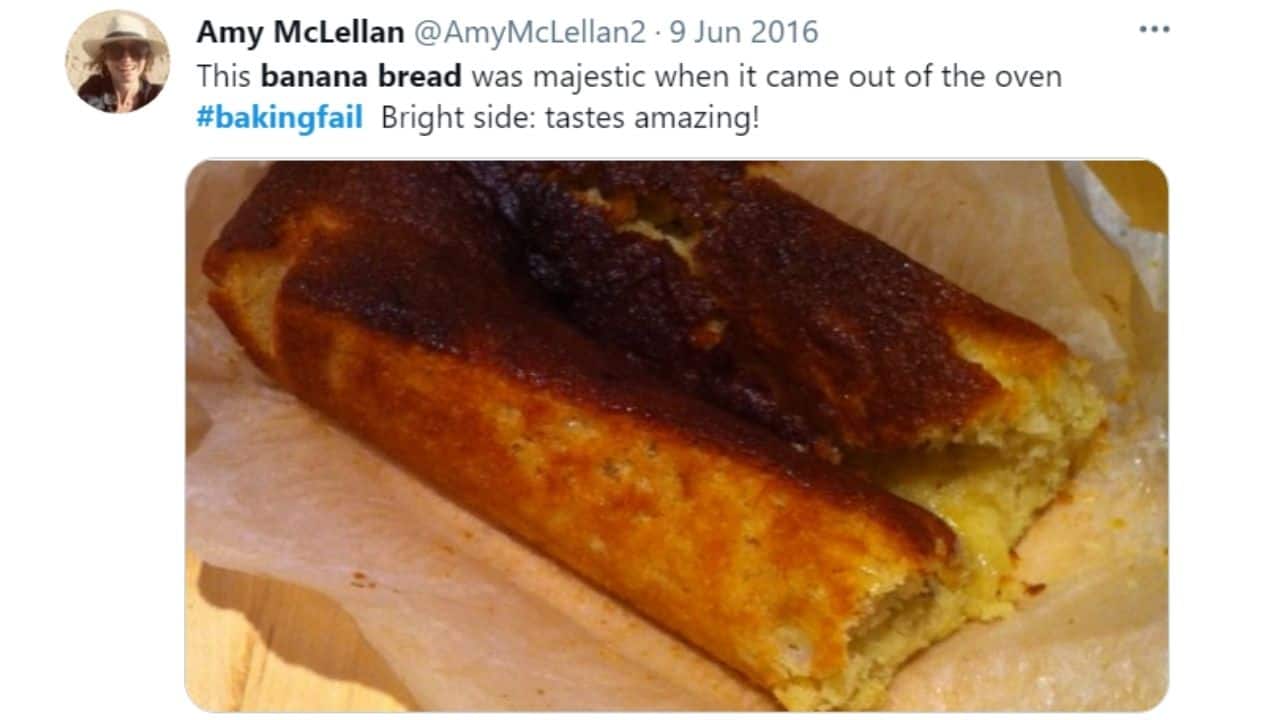
So now what? Try the following:
1. Adjust the oven temperature
If the loaf is already golden brown outside and still undercooked inside, then try lowering your oven temperature by 50°F (10°C) degrees.
The range of recommended cooking temperature for banana bread can be anywhere between 325-375°F (163-190°C). That’s a wide range, plus, your oven could be a little off from what it says. Some ovens just run hot.
The heat could be cooking the bread too quickly on the outside. This will cause it to be brown on top but not fully allow it to bake in the middle, resulting in an undercooked and mushy center. This can also happen if the temperature stated in your recipe was meant for a gas oven, but you are using an electric fan oven.
When using fan-assisted ovens, cooking temperatures should generally be reduced by around 50-68°F (10-20°C). This is because the fan in the oven circulates hot air around the loaf, ensuring a more even temperature and baking your bread faster.
2. Don’t open the oven door mid-bake
Checking on your banana bread too soon or too often can spell disaster and result in a temperature drop. Try to check on your bakes through the glass without instead without compromising the baking process.
Depending on the size of the loaf, in general, it takes about 60-70 minutes to bake a loaf of banana bread until fully cooked. Don’t check the center till toward the end of the baking cycle until the loaf is well-risen and golden brown.
3. Use an oven thermometer
Most modern ovens have an in-built thermometer, but some can often have problems displaying the correct temperature. That is not good if you’re trying to achieve that perfect bake. Instead of buying the new oven, you can simply buy a stand-alone oven thermometer like the one below. These little cooking devices are very cheap and surprisingly accurate.
Just position the thermometer in the middle of your oven, next to your loaf pan, where it can be easily viewed without opening the oven door.
4. Cover with foil to avoid browning prematurely
If you notice that your loaf is browning before it is cooked correctly in the middle, loosely cover it with foil, or even better if you get a loaf pan with the lid, which is perfect for most baking projects.
Covering your loaf protects the surface from the direct heat and allows more even baking throughout.
5. Adjust the cooking time
Do not just take it out when the timer goes off. Test your bread by inserting a wooden toothpick or knife into the middle. If it comes out clean and free of batter, it is done. If not, leave it in the oven, checking it every 5-10 min.
6. Change your loaf pan
If you have old pans, it’s time to upgrade! A sturdy cast iron or stone loaf pan is better because it promotes even heating and cooking throughout. Also, ceramics is another great heat conductor.
Check out my latest post about the best bakeware materials and oven-safe temperatures.
Your Banana Bread Is Chewy And Gummy
The bottom of the bread just doesn’t have that light, fluffy texture; rather, it is thick, chewy, and sticky. This is where the science of baking is going to need some investigating.

1. Not baked long enough
In most cases, it could be that your loaf was just not baked long enough and could have used an extra 10 minutes in the oven. However, if that is not the case, then here are a few other things you could consider:
2. Not enough flour
The ratio of liquid is too much for the flour you used. The solution is to add more flour. Try adding ¼ cup at a time. The batter texture should be a little thicker than the pancake batter. We may have created another problem with leavening agents needing to be increased. That will be addressed in a moment and is a different reason it could be too gummy.
3. Needs more leavening
The recipe may need you to add more baking soda and baking powder. The job of these leavening agents is to create a chemical reaction with the liquid. When this occurs, it gives the baked bread a light texture and causes it to rise and puff up.
A good rule is:
- 1 teaspoon baking powder to 1 cup of flour
- ¼ teaspoon baking soda to 1 cup of flour
Of course, you don’t want to use too much of them either, which could cause some other problems, which I will cover a bit further down.
5. Too much banana
It is tempting to want to mash more in the recipe but don’t do it! The recipe may tell you to add a certain number of bananas. This is a problem because saying a large or medium banana isn’t going to give you exact measurements each time.
Look for a recipe that tells you volume or weight. An interesting point is that the banana is a liquid in baking. Just like the liquid-to-flour ratio, we need the proportions to be right when it comes to bananas.
6. Frozen or too ripe bananas
Using frozen or overly ripe bananas can make your loaf too moist and gooey. Make sure to drain the excess liquid from the mashed banana. Too much liquid will give it that wet, gooey texture in the middle.
To drain the liquid, take a strainer and push the excess liquid out of the mashed bananas.
If you are not sure whether or not your bananas are still edible, check out my latest post here: Is It OK To Eat Bananas That Are Black?
Your Loaf Is Dense And Rubbery
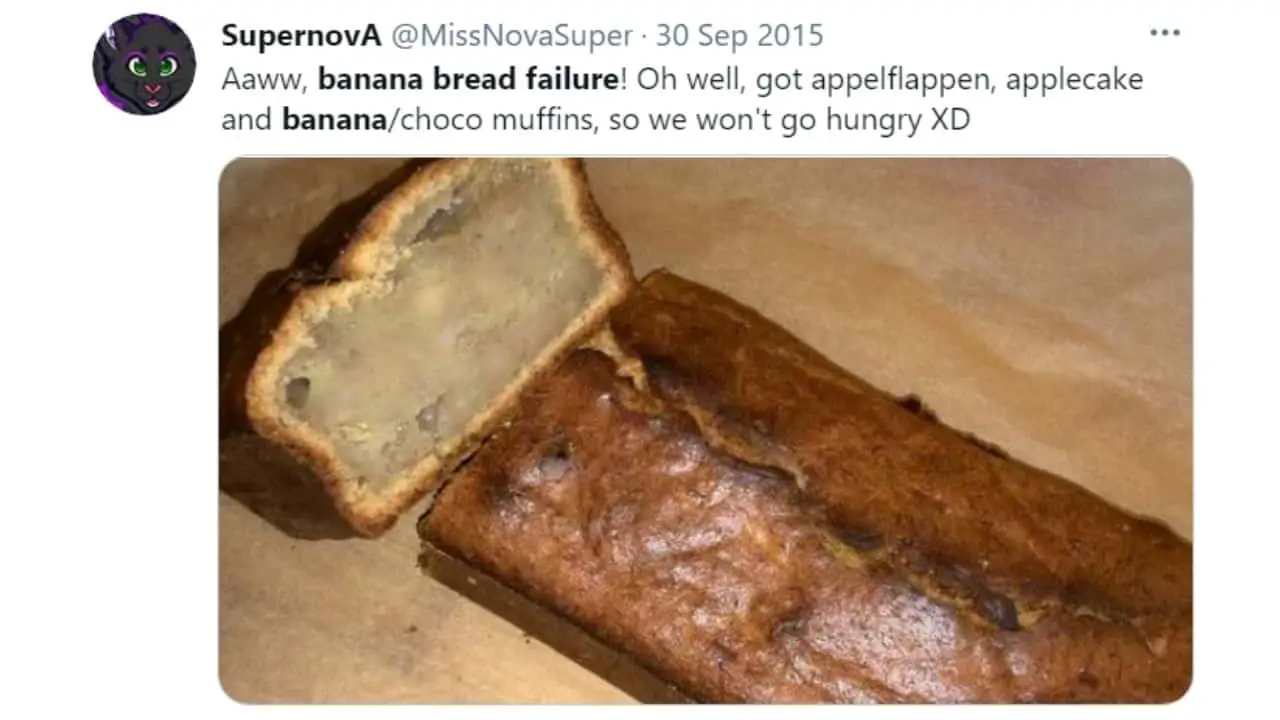
This is always disappointing when your loaf doesn’t rise properly and seems to be thick and heavy. It could still taste ok but let’s look at what went wrong.
1. Check the leavening agents
Looking again at the baking soda and powder, check if they are expired. Use fresh ingredients so they will chemically react the way baking intended. You may need to check your ratio again too.
2. Bananas may have been too ripe

Your bananas may have been too ripe. It seems silly because usually, the point of banana bread is to use the excess of ripe bananas. You want to use bananas that are covered with dark brown speckles; however, if they are entirely black, they could be a bit too ripe and watery for the recipe.
Luckily, there is an easy fix; (as long as they have not started to ferment already), just drain the excess liquid of the mashed bananas.
3. Don’t reduce sugar too much
A lot of recipes require that you use the creaming method, where fat and sugar are creamed well together. The reason is that it adds air into the batter, creating that desired fluffy texture.
Also, if you have removed some sugar from the recipe or put too little, it could be a problem. Without enough sugar, it will not be able to fluff enough to can give it that slightly crumbly texture.
4. Don’t overmix the cake batter
It is more important than you think. If you over-mix the batter, this can create a very dense bread. You want to gently fold in the dry ingredients. Try NOT to use an electric mixer or a food processor.
When over-mixed, it causes the gluten to start developing. Over-developed gluten will cause the bread to have a chewy and rubbery consistency.
Your Loaf Is Flat Or Sunken In The Middle
It may still taste ok, but the bread falls a little flat or completely sinks in the middle. If it didn’t get that raised and puffed look to it, this could be because it’s too dense, but several other factors may have caused it if it completely sunk in the middle.
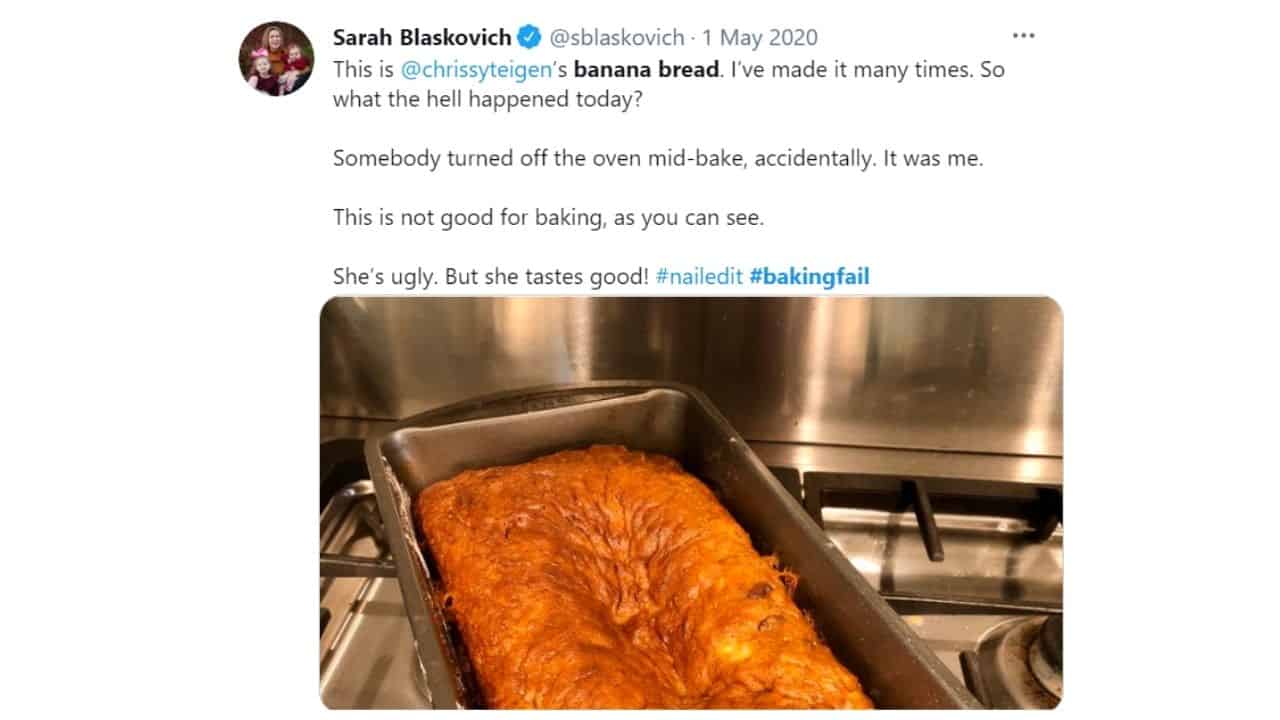
1. Incorrectly measured ingredients
Your batter might have not enough dry ingredients and too many wet ingredients. When the batter has more moisture content than it should have and lacks structural ingredients like flour, for instance, which traps the air leading that can be the main cause for the cake to rise and then collapse.
2. Ingredients not mixed in order
The order in which you add your ingredients can make a difference. It seems easier to save on time and just use one bowl, but the results will not be what you want. You could try to mix all the dry ingredients separately. You can choose to mix all the wet ingredients together and then add the dry. I find it important to cream the sugar in with the butter (if using).
3. Checking too early
One of the hardest things is to leave the oven shut. You may want to open the door and peak during baking or even take it out of the oven to check, but don’t!
The reason is that the temperature needs to stay consistent. When you let the cooler air into the oven, it can mess with the bread’s even cooking, making it sink. To solve this, keep the door closed until it seems almost done, then it’s time to check.
4. Too much baking soda or baking powder
Leavening agents help the loaf rise, and you need to add them in proportion to the other ingredients in your recipe. Too little or too much baking powder or baking soda will lead to too little or too much gas forming in your baked goods, which will make it not rise enough or rise too quickly, causing cakes to sink.
The loaf completely collapses in the middle is due to the air escaping from the still-raw batter, and the middle part of the loaf sinks back down.
Too much baking soda can also cause your loaf cake to brown too quickly and could leave a weird taste. The Maillard reaction (browning) could be sped up too fast because of the alkaline conditions caused by excess baking soda.
5. Too much sugar
The sugar added should not be more than flour. Personally, I don’t think the sugar should be equal to the flour either.
The reason is that the sugar’s weight is much heavier than flour. When the ratio is off, the heavy sugar can cause the banana bread to sink and become heavy. The flour is intended to hold the mixture together. An important note is that sugar will melt, making it more like a liquid rather than a dry ingredient.
You may have played around with your recipe and made some changes to your ingredients, and it’s still not right. Perhaps you overcompensated and created a new problem. Let’s continue with some other problems and troubleshooting.
Your Banana Bread Is Too Dry
The banana bread isn’t holding together well. It seems to be too dry and crumbly.

1. Try using oil instead
Your recipe may call for butter or oil. Which do you use? Butter is generally great for baking, but when it is cooled, it becomes solid. So as your banana bread cools, it can become thicker and have a slightly dryer texture than you like. Since oil is still liquid, when cooled, it will lend a moist texture to the bread.
If the recipe your using calls for butter, try replacing half of it with oil. You can replace it entirely with equal ratios too.
2. Over baked
In an attempt to keep it from being undercooked in the center, you might leave it in the oven for just a bit too long. Don’t forget to check your bread with a knife or toothpick. Insert it into the center of your cake, and when it comes out clean, your loaf is ready and can be removed from the oven.
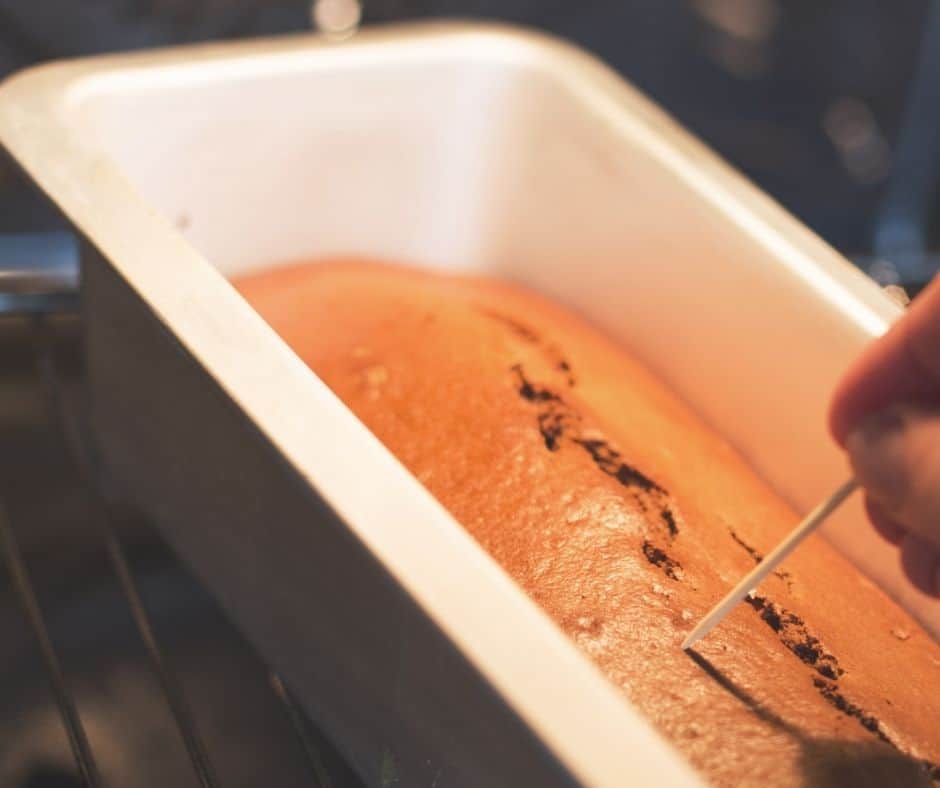
3. Too much flour
You may have added too much of the dry ingredients. Without the liquid to hold it together, it is falling apart and makes it crumbly. So, reconsider how much flour you have added and adjust. You might need to add a little more banana or fat to the recipe.
Your Loaf Don’t Have Enough Banana Flavor

Some recipes end up tasting more like cinnamon bread or regular loaf cake than that fruity sweet flavor of traditional banana bread you were looking to make.
1. Not enough sugar
In an attempt of trying to make it feel healthier, you may have taken out a lot of sugar. Doing so can cause a dryer baked good. Taking out too much sugar can also create a lack of flavor. Sugar helps enhance the banana flavor and the spices you have added.
2. Too many spices
Many recipes call for adding cinnamon, cloves, nutmeg, cardamom, and vanilla extract. Adding too many or too much of these spices can be overpowering and diminish the flavor of the bananas.
3. Too much egg
The recipe might call for a lot of eggs, and this can give it an eggy flavor. Eggs are in a recipe to provide stabilization and give it a light texture.
Taking away or adding 1 egg won’t do too much because the volume isn’t a lot. So, try to compare recipes to find a balance of egg to flour ratio. There is no rule for this; unfortunately, it is about preference. So, test it out.
4. Not enough, too green or too ripe bananas
This may seem obvious, but you want to make sure you have added enough bananas. This was mentioned earlier but applies here as well. Find a recipe that calls for a volume amount or weight of bananas rather than a number. When a recipe states several bananas are to be used, it can be tricky to know the size or amount they used.
Also, the greener the bananas, the weaker the flavor. If the bananas are too ripe, they may have lost their natural flavor and taken on a bit of alcoholic flavor.
And lastly, the banana bread should not really have a super intense banana flavor anyway; baking mutes the flavor, which is why your loaf rarely tastes as fierce as eating the fruit itself.
In Conclusion
Now, I know it all may seem a bit overwhelming. Just compare different recipes and make only 1 change to yours. It will be trial and error, sadly. Just think, though, one or two of the not-so-perfect recipes will lead to a lifetime of the most incredible banana bread ever!
So, get to baking and enjoy the science and process of creating your favorite banana bread recipe!
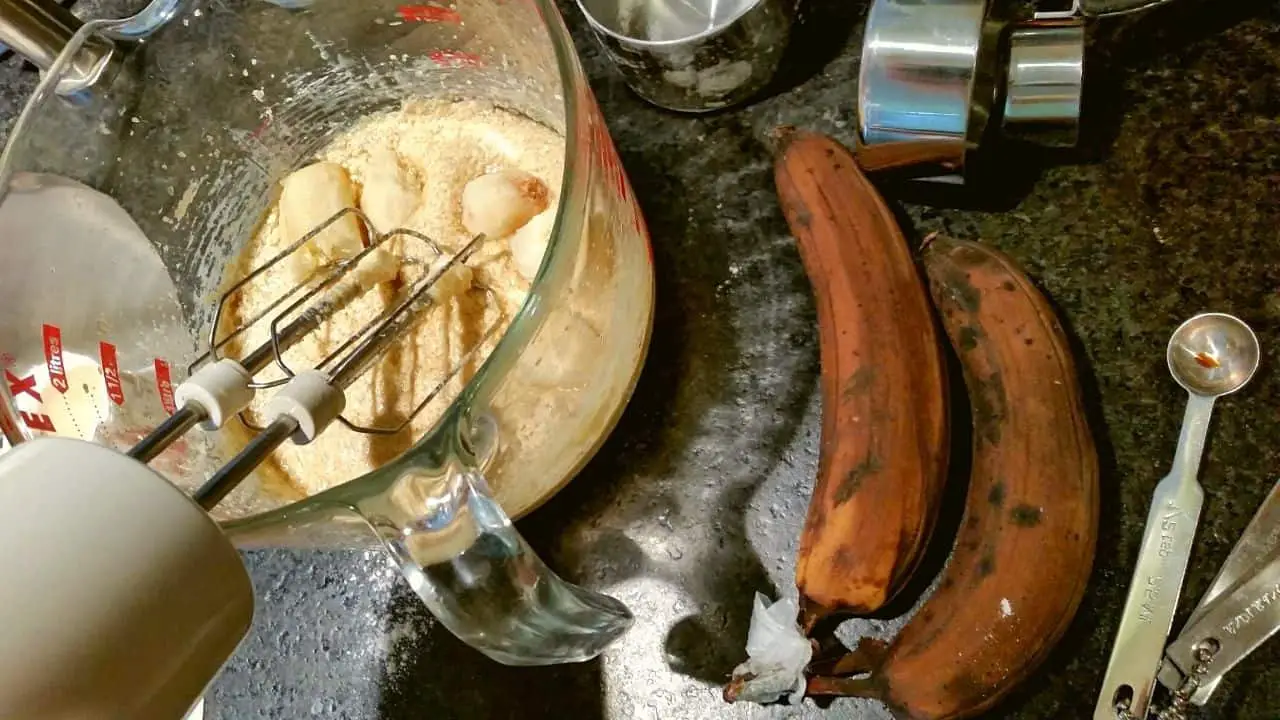

Other than starting over could you ad more fixes. I used too much baking soda I haven’t baked it yet so I may try adding in proportion the other ingredients to even it out.
It is worth a shot
Add not ad